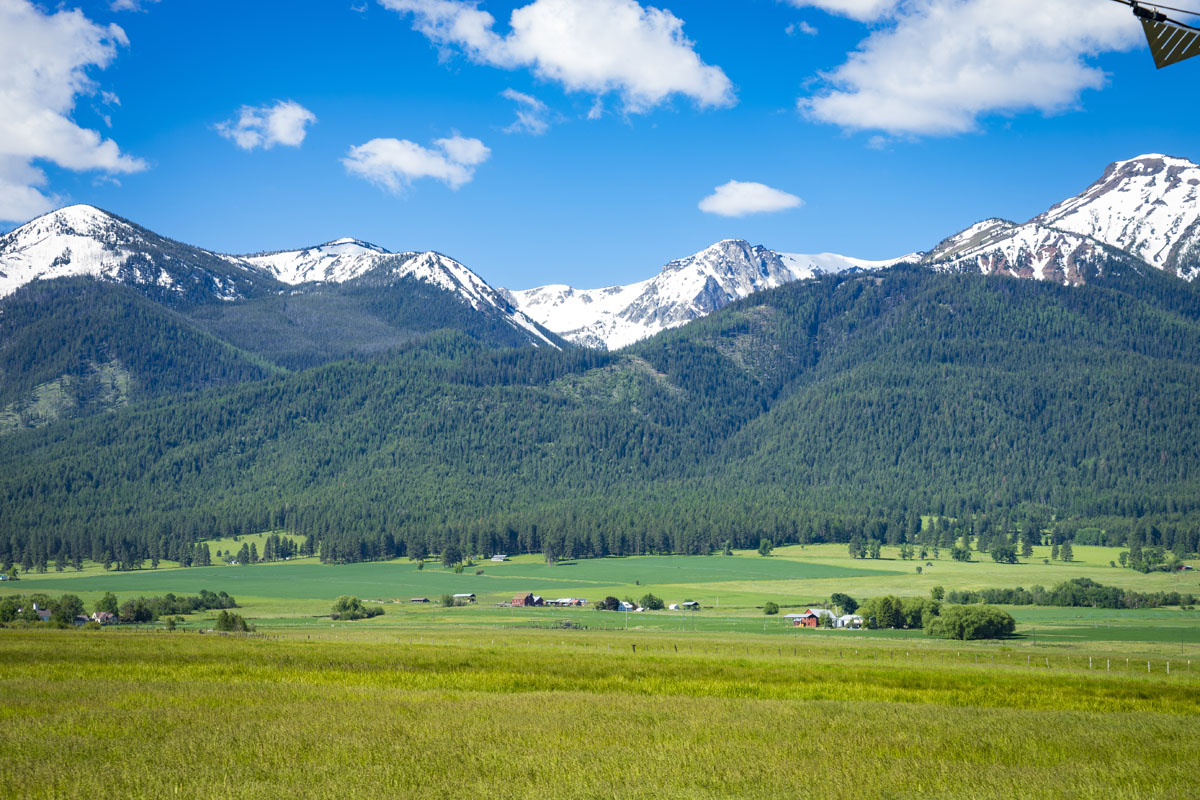Why Are Wallowa Mountains So Prominent?
Unveiling the Geological Tapestry: What Makes the Wallowa Mountains So Prominent
Wallowa Mountains geology

Standing tall and proud in the northeastern corner of Oregon, the Wallowa Mountains command attention with their rugged peaks and breathtaking vistas. These mountains, often referred to as the “Alps of Oregon,” are nothing short of prominent. But what makes the Wallowa Mountains so remarkably prominent? In this blog post, we’ll delve into the geological marvels that have shaped these iconic mountains and have given them their distinct prominence on the Pacific Northwest landscape.
The Force of Tectonics
The story of the Wallowa Mountains’ prominence begins millions of years ago with the inexorable forces of tectonics. The Pacific Northwest, where the Wallowa Mountains are situated, is no stranger to the geological drama of plate tectonics.
Subduction Zone:
The Wallowa Mountains are part of the complex geological setting of the Pacific Northwest, which includes the Cascadia Subduction Zone. Here, the Juan de Fuca Plate is diving beneath the North American Plate, creating immense pressure and uplifting the landscape.
Compression and Uplift:
The collision and subduction of tectonic plates in this region have led to the compression of Earth’s crust. Over time, this compression has resulted in the uplift of mountain ranges, including the Wallowa Mountains.
The Sculpting Power of Glaciation
While tectonics set the stage for the Wallowa Mountains’ rise, it was the power of ice that sculpted their distinctive features and contributed to their prominence.
Pleistocene Epoch:
During the Pleistocene Epoch, commonly known as the Ice Age, the Wallowa Mountains were blanketed by glaciers. These massive sheets of ice advanced and retreated, carving deep valleys and shaping the rugged terrain we see today.
U-shaped Valleys:
Glaciers are notorious for their ability to carve U-shaped valleys, and the Wallowa Mountains are no exception. The valleys between the mountain peaks bear the unmistakable mark of glacial activity, creating dramatic landscapes.
Cirques and Horns:
The high peaks of the Wallowa Mountains are adorned with cirques, amphitheater-like hollows carved by glaciers. Additionally, horn-shaped peaks, such as Matterhorn and Sacajawea Peak, are evidence of glacial sculpting.
The Gift of Volcanic Activity
The Wallowa Mountains owe part of their geological prominence to volcanic activity, which has played a role in shaping the region’s topography.
Cascade Volcanic Arc:
While the Wallowa Mountains themselves are not volcanic, their proximity to the Cascade Volcanic Arc is significant. This volcanic arc includes iconic volcanoes like Mount Hood and Mount Rainier, and its geological activity has contributed to the formation of the surrounding landscapes.
Lava Flows and Sediments:
Volcanic eruptions in the past have led to the deposition of volcanic rocks and sediments in the Wallowa Mountains’ vicinity. These materials have influenced the composition of the terrain and added to the prominence of the range.
Unique Geological Features
The Wallowa Mountains are home to a variety of unique geological features that contribute to their prominence.
Glacial Lakes:
The numerous glacial lakes dotting the Wallowa Mountains’ landscape are remnants of the region’s glacial history. These pristine alpine lakes, often nestled in cirques, enhance the area’s dramatic beauty.
Moraines:
Glacial moraines, consisting of rocks and debris deposited by glaciers, are scattered throughout the Wallowa Mountains. These moraines serve as records of past glacial activity and add to the rugged terrain.
Granitic Intrusions:
The core of the Wallowa Mountains is composed of granitic intrusions, formed by the cooling of molten rock beneath the Earth’s surface. This hard, resistant rock has played a role in shaping the prominent peaks of the range.
Cultural Significance
Beyond their geological prominence, the Wallowa Mountains hold cultural significance, particularly for the Nez Perce Tribe. The mountains are part of the tribe’s ancestral lands, and they feature prominently in Nez Perce traditions and oral history.
Conclusion: Nature’s Majestic Showcase
The prominence of the Wallowa Mountains is a testament to the remarkable geological forces that have shaped this corner of the Pacific Northwest. From tectonics and glacial carving to volcanic influence, these mountains stand as a geological showcase. Their dramatic landscapes, U-shaped valleys, and soaring peaks tell a story of Earth’s ever-changing canvas. Whether you’re a geology enthusiast or an avid hiker, the Wallowa Mountains offer a front-row seat to the majesty of nature’s geological wonders.




